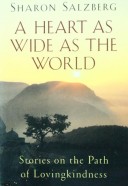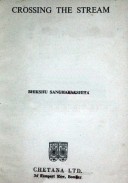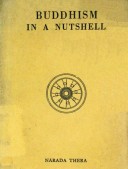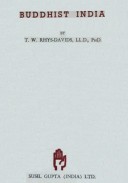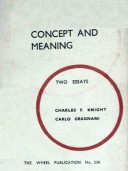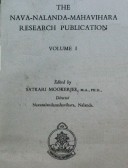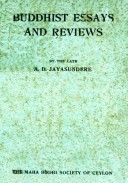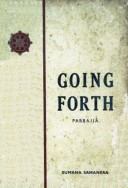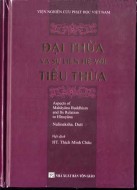Tìm Sách
Sách tiếng Anh-English >> A Heart as wide as the world
Thông tin tra cứu
- Tên sách : A Heart as wide as the world
- Tác giả : Sharon Salzberg
- Dịch giả :
- Ngôn ngữ : Anh
- Số trang : 190
- Nhà xuất bản : Shambhala
- Năm xuất bản :
- Phân loại : Sách tiếng Anh-English
- MCB : 1210000003678
- OPAC :
- Tóm tắt :
A heart as wide as the world
Stories on the path of lovingkindness
ACKNOWLEDGEMENTS
I AM FOREVER GRATEFUL to His Holiness the Dalai Lama of Tibet, Aung San Suu Kyi of Burma, and all of my teachers, many of whose stories appear on these pages.
I would like to thank Sam Bercholz, who suggested I write another book, and Peter Turner, who made it real in the beginning, in the middle, and at the end.
The direction of this book was inspired by several important conversations, most notably with Alice Walker. Ongoing dialogues about spirituality and social action with Tara Bennett-Goleman, Mirabai Bush, Gary Cohen, Ram Dass, Carol Densmore, Amy Elizabeth Fox, Joseph Goldstein, Dan Goleman, Paul Gorman, Enid Gorman, Colin Greer, Joan Halifax, Charlie Halpem, Susan Halpem, Kedar Harris, and Jai Lakshman have changed my understanding in many ways.
Shoshana Alexander’s visionary and editorial direction on the book were essential; plus, to whatever degree I am learning how to write, it is because she is teaching me. I also want to thank Kate Wheeler for revealing to me the point of some of my stories; and David Berman for so very many things, among them: telling me the middle path was like a fractal, turning out to be a computer genius, and staying up most of the night to make the disk. Also Hal Ross for the same late night, for turning out to be a wonderful editor, and for having a beautiful sense of service throughout.
Many people have helped me in significant ways during this period of writing, including: Seymour Boorstein, Amy Schmidt, Martha Ley, Sarah Doering, Sunanda Markus, Chris Desser, Anne Millikin, and John Friend. Eric McCord offered great service’ in clarifying text and creating a sequence to my flow of ideas. More people than can possibly be named helped in searching for a title for the book, but especially Steve Armstrong and Myoshin Kelley. There are friends named in my stories, including Joseph Goldstein, Kamala Masters, and Sylvia Boorstein, who gave me permission to write about them. Stories also appear about other, unnamed friends, the legion of which includes, but is not limited to: Susan Harris, Maggie Spiegel, Gina Thompson, David Berman, Ram Dass, Kate Wheeler, Catherine Ingram, Daeja Napier, Ashley Napier, Wayne Muller, Larry Rosenberg, Ann Buck, Mitch Kapor, and Meg Quigley. It is wonderful to be able to share this lifetime with all of them.
INTRODUCTION
From my earliest days of Buddhist practice, I felt powerfully drawn to the possibility of finding a way of life that was peaceful and authentic. My own life at that time was characterized largely by fear and confusion. I felt separate from other people and from the world around me, and even oddly disconnected from my own experience. The world I experienced was sharply dualistic: self and other, us and them. This view increased my fear, which of course also increased my suffering.
Stepping onto the Buddhist path, I saw that it was possible to be free of feelings of separation and defensiveness— that one could live with a seamlessness of connection and an unbounded heart. The life of the Buddha embodied this. Wisdom and compassion consistently guided his actions, whether he was alone or with others, whether wandering through India or being still, whether teaching or silently meditating, whether with those who admired him or those who slandered him. There seemed to be no circumstance that limited his compassion; he truly had a heart as wide as the world.
The essence of the Buddha’s teaching is that we all have this same capacity for compassion and for peace. This potential is not abstract or distant, not something available only to those who lived long ago in another land. A life of connection and authenticity can come completely alive for us, now. We can make it our own. Discovering that our hearts are indeed wide enough to embrace the whole world of experience—both pleasurable and painful—is the basis of the spiritual path, and with it comes an extraordinary freedom and happiness. This way of living is beautifully described by the poet Rilke:
I live my life in widening circles that reach out across the world.
I may not ever complete the last one, but I give myself to it.
As we give ourselves to the practice of mindfulness, wisdom, and compassion, our habitual patterns of attachment and separation are seen for what they are: painful and unnecessary mistakes. This realization lifts the heaviness from our hearts, so that we can encounter anything without getting deeply lost in fear, anger, or clinging. We can encounter anybody without being engulfed by feelings of estrangement and separation. We can begin to live in a way that enables our hearts to include rather than exclude, to open rather than constrict, to go forward with the energy of lovingkindness rather than be held back by the illusion of separation. We can begin to live in a way that is commensurate with our own extraordinary potential—the potential of being truly awake. This potential is the truth that lies at the center of the Buddha’s life and teaching. This truth is also our truth. The unbounded heart of the Buddha can be our own as well.
My hope is that this book may encourage you to bring mindfulness, wisdom, and compassion to life through practice, so that you may learn that your own heart can become as wide as the world. To paraphrase Rilke: you need only give yourself to it.
CONTENTS
Acknowledgments
Introduction
Part One. The spirit of Meditation
“I Have What You Need”
Coming Alive
For the Love of a Buddha
Transforming Suffering
Natural Caring
The Blessing of Right Effort
In the Beginning
Reclaiming Our Power
Happy to Concentrate
The Awareness of Breath
The Heavenly Abodes
Just the Way It Is
Returning Home
The Heart of Practice
Drop by Drop
The Object of Our Desire
Anger
Waiting to Live
Restlessness
Self-Forgiveness
Seeing Our Way through Doubt
Resting the Exhausted Mind
The Torment of Continuity
Daily Liberation
Part Two. The Practice of Transformation
Like the Presence of the Sky
Never Alone
Seeing Pain
Judging
Personality Types
Tidal Wave
The Greatest of Powers
Your Last Apple
Moments of Liberation
The Web of Connection
Changing Seasons
One Thing Only
Facing Suffering
Faith—To Place the Heart Upon
Selflessness
The Bridge of Empathy
No Pizza in Nirvana
Practicing for Dying
The Transparent World
Chili Peppers
Knowing the Deathless
Compassion Is a Verb
Part Three. Living with Wisdom and Compassion
The Buddha’s Revolution
Caught Up
The Mistake
Greedy, Grumpy, Sleepy, Anxious, and/or Dubious
The Middle of the Middle Way
Prayers at the Western Wall
Something and Nothing
Precepts for Smart People
Joyful Compassion
The Opportunity of Imprisonment
The Heart of Forgiveness
The Blessing of Presence
Truth-telling
The End of the Path
Responsibility
Ready to Die
Step by Step
Seeing Deeply
Very Happy
The Presence of Patience
The Happiness of Giving
Wonderment
Going Forward
 Facebook
Facebook
 Google
Google
 Google+
Google+
